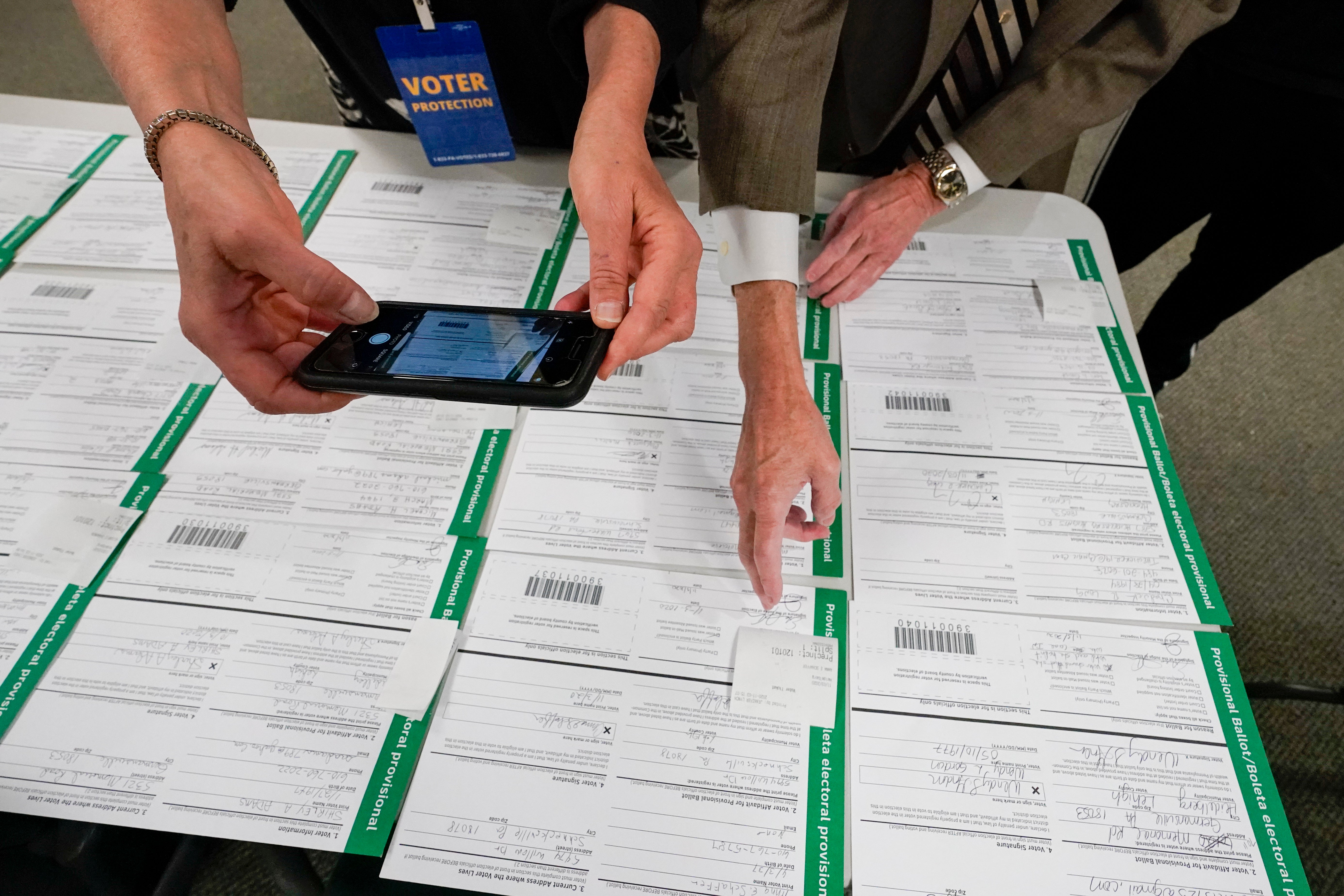EXPLAINER: What is a 'cured' ballot?
What is a “cured” ballot

Your support helps us to tell the story
From reproductive rights to climate change to Big Tech, The Independent is on the ground when the story is developing. Whether it's investigating the financials of Elon Musk's pro-Trump PAC or producing our latest documentary, 'The A Word', which shines a light on the American women fighting for reproductive rights, we know how important it is to parse out the facts from the messaging.
At such a critical moment in US history, we need reporters on the ground. Your donation allows us to keep sending journalists to speak to both sides of the story.
The Independent is trusted by Americans across the entire political spectrum. And unlike many other quality news outlets, we choose not to lock Americans out of our reporting and analysis with paywalls. We believe quality journalism should be available to everyone, paid for by those who can afford it.
Your support makes all the difference.Across the country, any uncounted ballots cast by Election Day are being verified and tabulated as election officials work toward reporting results of the 2020 presidential election.
In some cases problems such as a missing signature can occur, and voters are provided an opportunity to “cure,” or fix, ballots so they can still be counted. This is a normal process in many states; while actual voting is over, the work of finalizing results will continue for days and, in some cases, weeks.
Here, Christina A. Cassidy, a reporter for The Associated Press who covers voting and election security, offers some insight into the post-election process for fixing ballots:
UNDER WHAT CIRCUMSTANCES CAN A BALLOT BE CURED?
If voters casting ballots in person run into a problems at a polling place, they can simply ask the nearest poll worker for help. That’s not the case for voters using a mail ballot, so several states have created a process for these voters to fix certain errors such as a missing or mismatched voter signature.
Eighteen states require voters to be notified if their ballots are missing a signature or there is some discrepancy between the signature on the ballot and the one on file at the election office, according to the National Conference of State Legislatures, which tracks state laws. These states all provide time for voters to fix these ballots, ranging from two to 21 days depending on the state.
In states that lack such a process, ballots with these problems are generally not counted. But a few states do not use signature verification to validate a mail ballot, including Pennsylvania. For ballots missing a signature, Pennsylvania lacks a formal cure process, though some counties have allowed voters to fix them — a source of litigation in the state.
HOW ARE BALLOTS CURED?
Rules vary on how voters can fix their ballots. In most cases, voters must sign and return an affidavit confirming the ballot is theirs. There may be additional requirements. For instance, Georgia requires identification along with the affidavit. In a few states, if the problem is identified before Election Day, the voter is sent a replacement ballot.
ARE THESE VOTES LEGAL?
Yes. President Donald Trump has complained that Republican poll watchers have been unable to observe the ballot review process in key states, arguing on Twitter that “votes accepted during this period must be determined to be ILLEGAL VOTES.” But Republican poll watchers have had the same access as Democrats, and poll watchers do not determine the validity of signatures and ballots.
Election workers review these ballots and decide which ones to count, which ones qualify for the curing process (if allowed) and which ballots are rejected. Partisan poll watchers can report concerns to party officials, who can raise objections and file lawsuits.